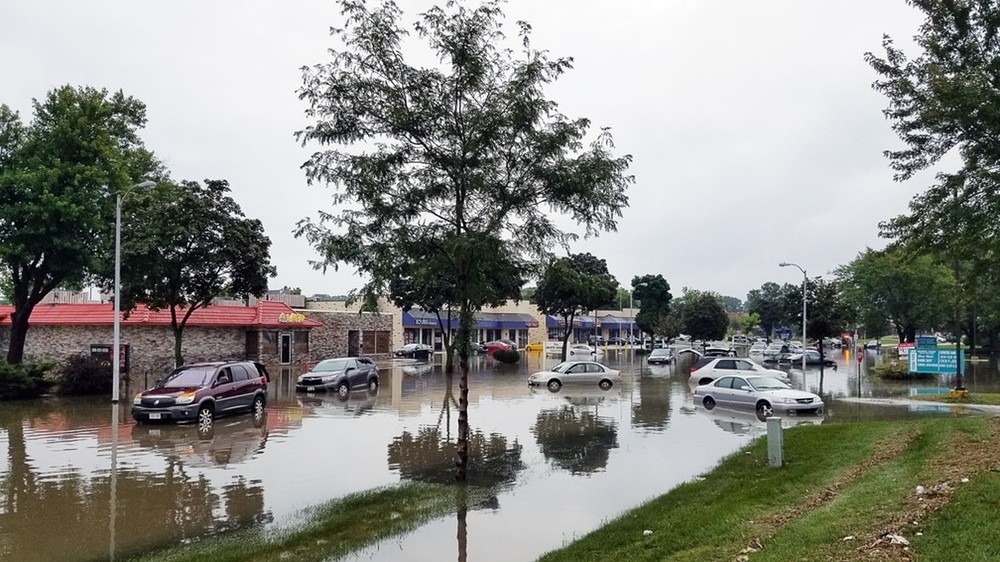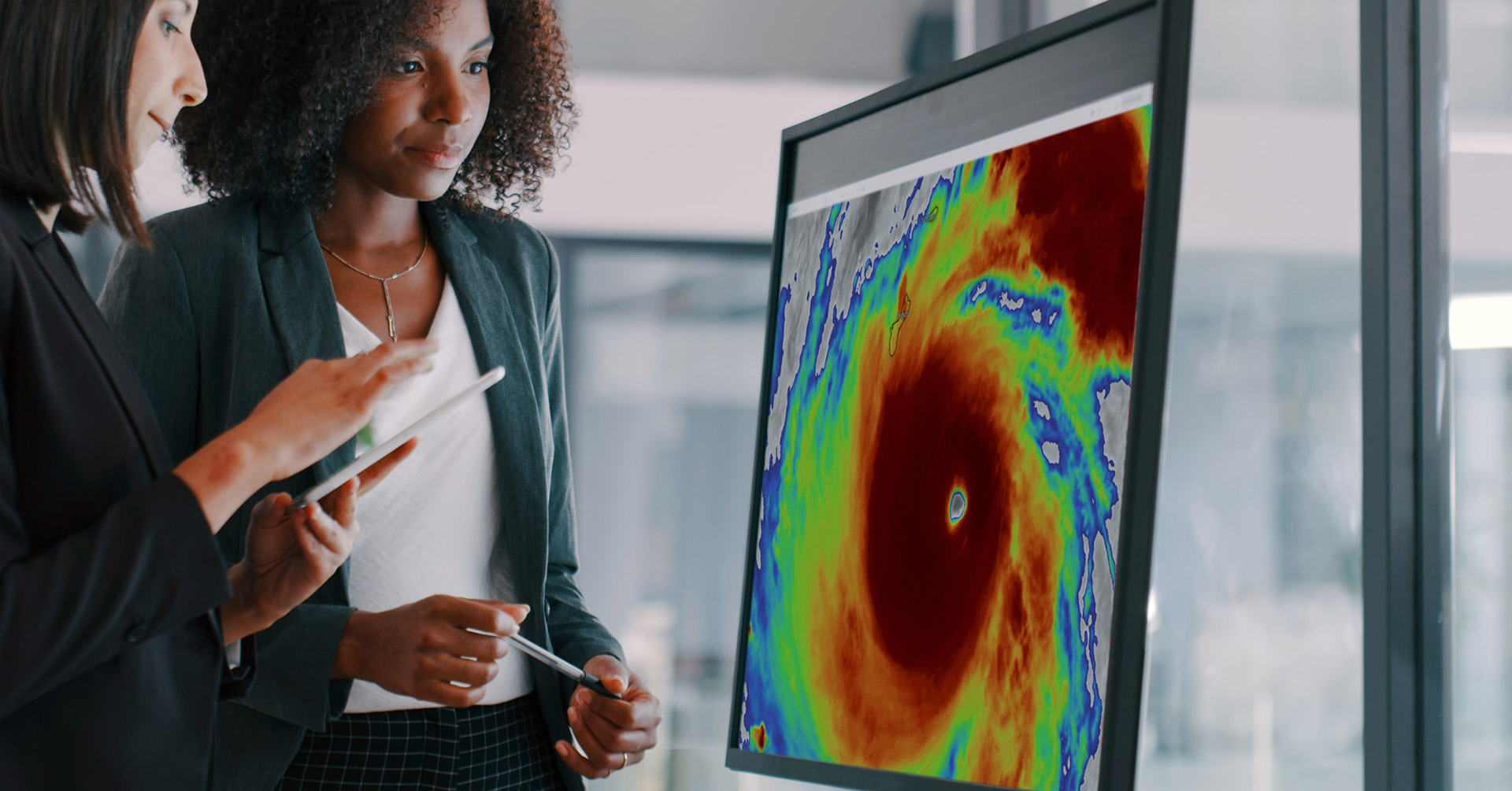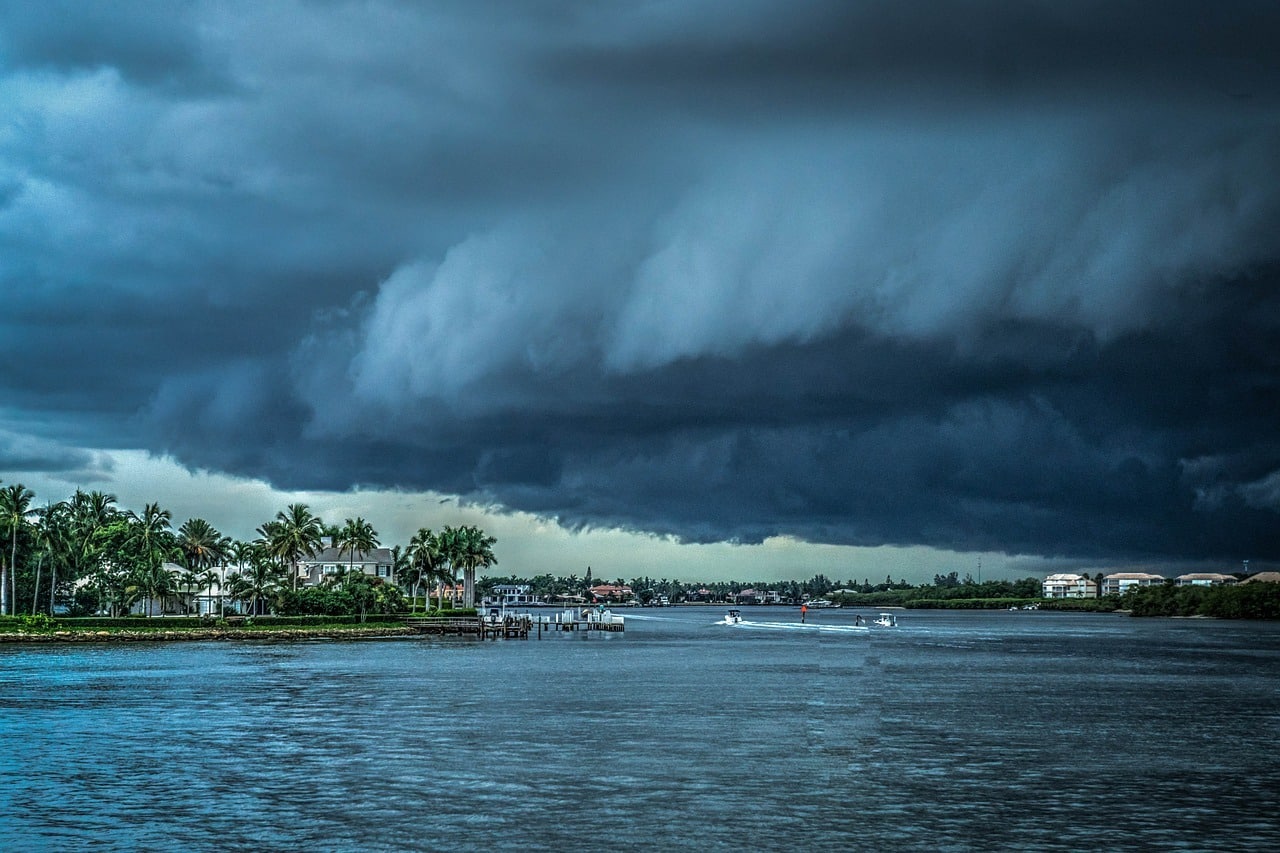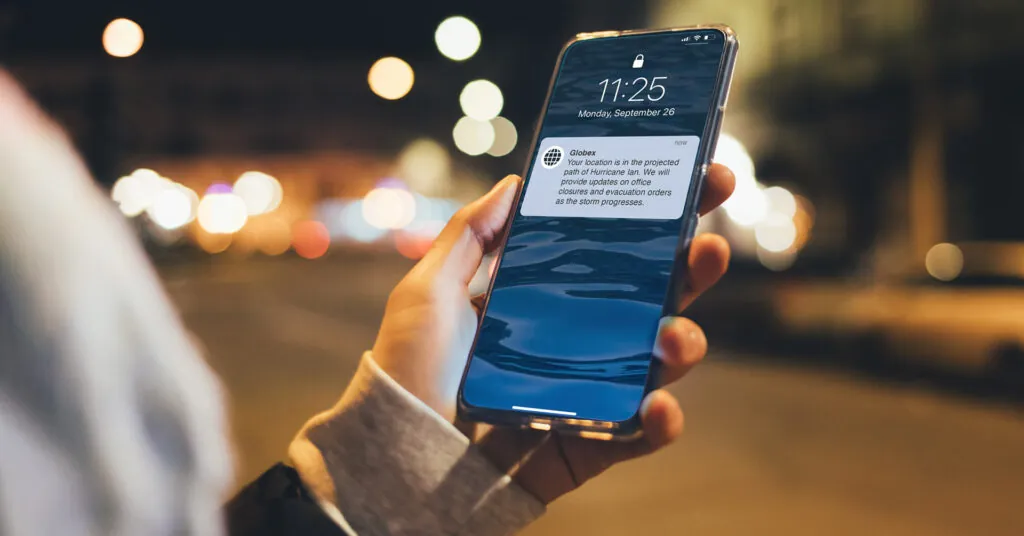
Sample Hurricane Email to Employees & Other Notification Templates
Hurricanes are dangerous and unpredictable, but you can offer reassuring and helpful guidance to your employees before, during, and after the chaos with the right communication tactics.
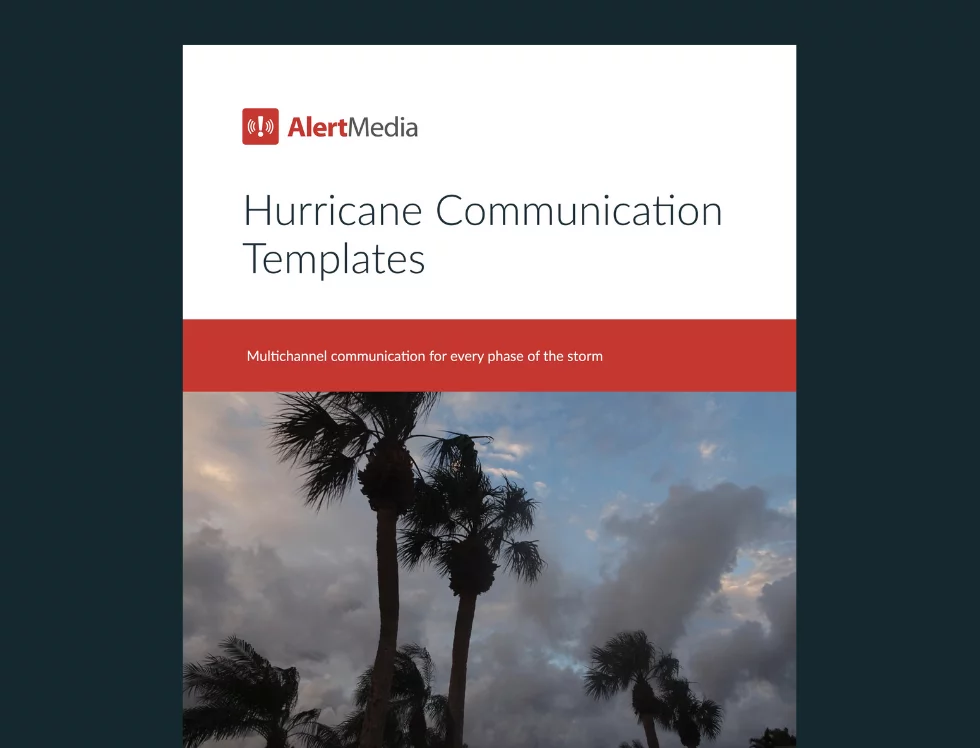
Meteorologists at Colorado State University (CSU) released their predictions for the 2024 Atlantic hurricane season, and experts predict an “extremely active” season. NOAA’s predictions are similar, with projections including 17–25 total named storms and 4–7 major hurricanes with the potential to do some serious damage. To put that in perspective, 2023 featured 20 named storms, making it the fourth most active Atlantic hurricane season since 1950.
Jason Moreland, AlertMedia’s Senior Meteorologist, explains that CSU isn’t the only source sounding the alarm on a potentially historic Atlantic season. “The world’s four leading dynamical models have simulated what the season could look like with the current climate patterns. All four models indicate it will be a top 10 season, with a fair chance of it landing within the top five in terms of total activity.”
As businesses and organizations craft and update their hurricane preparedness plans, they need to determine how to communicate effectively before, during, and after a storm for both employee safety and business continuity. Timely and accurate hurricane communications can keep your people out of harm’s way and mitigate potentially costly and devastating impacts on your business. That’s why disaster preparedness experts recommend developing emergency response plans for different hurricane scenarios well in advance of a storm.
Fortunately, a modern emergency notification system can help you create customized messaging templates well before a storm (or any other natural disaster) threatens your people or property. They allow you to standardize your communication across email, text messages, and more. By having a documented emergency communication plan with templates on hand, you can drastically reduce the time required to get pertinent information to those who need it most.
Here’s everything you need to know about what to send, which channels to use, and how to use your emergency mass notification system to keep employees safe, informed, and connected through every phase of a storm. We’ve included a sample hurricane email to employees, as well as sample text messages for before, during, and after the storm.
Sample hurricane emails and other notification templates
How to Communicate With Employees During Hurricane Season
Download Our Hurricane Communication Templates

Communication needs can vary throughout the hurricane, ranging from a “how to stay safe during the storm” message to a survey during the storm to check if everyone is evacuated. When putting your hurricane notification templates together, you will want to focus on these core elements:
The notification type — Take advantage of versatile technology
When you send emergency alerts, consider the type of engagement you expect from the message recipients. Examples include:
- Basic one-way notifications: Broadcast information to your audience
- Two-way communication: Ensure productive information-sharing in both directions
- Interactive surveys and read receipts notifications: Solicit feedback and encourage audience engagement with the information
- Conference calls: Get an audience to collaborate on the phone to discuss issues in real-time
To determine the most appropriate notification type, consider the following questions:
- How time-sensitive is this information?
- How large is the audience you are trying to reach?
- On which devices are your employees most likely to receive notifications?
- Are you distributing information or requesting feedback?
- Is this a one-time update or information that will be revised over time?
The channel type — Ensure everyone receives critical messages
Hurricane notification templates should be created in such a way that you can easily deliver messages across all available communication channels, including:
- Text (SMS)
- Phone calls
- Mobile app push notification
- Microsoft Teams
- Messaging apps
- social media
- Any other communication channel your organization uses to get critical messages to your audience
During a hurricane, communications systems and providers often experience power outages and other disruptions, which can impact your ability to reach people via standard channels (e.g., cell phones). On an episode of The Employee Safety Podcast, Melissa Huffman with the National Weather Service emphasized that hurricane communication requires multiple redundant channels to be reliable. “One of the takeaways that I have from Hurricane Harvey is to have a backup for your backup. How are you going to get through an event when your failsafe is no longer there?” To guarantee message delivery, take advantage of all of the channels at your fingertips.
The message — Draft notification templates in advance
Specific messages can be prewritten for each action in an emergency plan. Be succinct and provide clear instructions to keep employees safe. Use read receipts as an important verification step to ensure the recipient received the message, is safe, and can respond.
You should also consider the channel type when composing the message. For example, the maximum length of an SMS message is 918 characters and will be broken up into separate messages if it’s longer than 160 characters. Therefore, a text should be short and to the point, whereas an email can be longer and more detailed.
For communication channels where character counts are limited (e.g., SMS, mobile push notification), consider directing employees to an event page where you can include more comprehensive information (see example below).
The audience — Group recipients strategically
An emergency is not the time to figure out who should receive a certain message. Consider how you can simplify selecting the appropriate recipients for each message when using a notification template. For example, you can create groups in your emergency notification system based on employees’ office location or home address (which is crucial for organizations with a large number of remote employees) to easily send out a hurricane message to employees.
This capability also ensures employees outside of the danger area aren’t bothered by irrelevant messages, and only the employees in harm’s way receive critical communications.
The event — Consolidate details and updates on a single webpage for employees
Use a tool like AlertMedia to create an event-specific website landing page. This “event” page will allow administrators to manage communications during the entire lifecycle of the hurricane, posting updates continually as the storm develops, when it makes landfall, and throughout the recovery process. In addition, keeping all notifications related to an event in one place allows employees to easily see all of the latest instructions and historical updates related to the hurricane, improving coordination and outcomes.
Hurricane Season Templates: Before, During, and After the Storm
As you build your hurricane notification templates ahead of time, keep in mind there are three distinct phases of a hurricane—each with its own messaging requirements. For example, while email is best when sending lengthy instructions or information, you should send shorter messages via text and push notifications, particularly in more urgent situations.
Before the storm
Thanks to science and technology, we now have far more detailed hurricane predictions from experts ahead of any impending storm. While the path of the hurricane often shifts, we typically have several days of warning to prepare.
As soon as you have reason to believe your employees, locations, or assets may be impacted by an approaching hurricane, it is a good practice to begin communicating about the storm. By communicating early, you’re demonstrating to employees that you are aware and monitoring storm forecasts and have plans in place to keep them safe and informed.
As the hurricane nears and conditions change, you should continue to provide regular updates concerning the expected severity of the storm, its expected path, the anticipated impact, how employees should respond, and where they can find additional information.
Sample hurricane email to employees
Use this pre-hurricane email template to notify employees:
[NAME OF CITY] is in the projected path of Hurricane [NAME]. As the storm progresses, we will provide updates on office closures, evacuations, and expected impacts.
Please take home your computers/chargers (and other items necessary to complete your job) to prepare for unplanned office closures. If you are currently working remotely from a location other than your listed home address, please reply to this email with your current location.
Please contact your supervisor about any questions or concerns you have. You can also call [CONTACT NAME AND PHONE] with any questions and concerns.
Sample hurricane text message to employees
Use this pre-hurricane SMS / text template to notify employees:
Your location is in the projected path of Hurricane [NAME]. We will provide updates on office closures and evacuation orders as the storm progresses.
Hurricane office closure message
Use this out-of-office text message for hurricane closures:
[COMPANY’S NAME] [OFFICE LOCATION] office will remain closed from [CLOSE DATE/TIME] to [REOPEN DATE/TIME] due to dangerous conditions caused by [STORM NAME]. Please contact us via phone or email if necessary. Replies may be delayed. Observe all local regulations and stay safe.
Hurricane out-of-office message
Use this sample hurricane email/voicemail to notify affected clients:
Thank you for [CALLING/EMAILING] [COMPANY NAME]. We are currently out of the office due to [HURRICANE NAME] and plan to return on [REOPEN DATE/TIME]. We apologize for any inconvenience. Feel free to leave us a message and we’ll respond as soon as possible. Stay safe out there!
Employees with any questions can reach out to [CONTACT NAME] directly at [CONTACT INFORMATION]. Existing customers may call or email their account managers.
During the storm
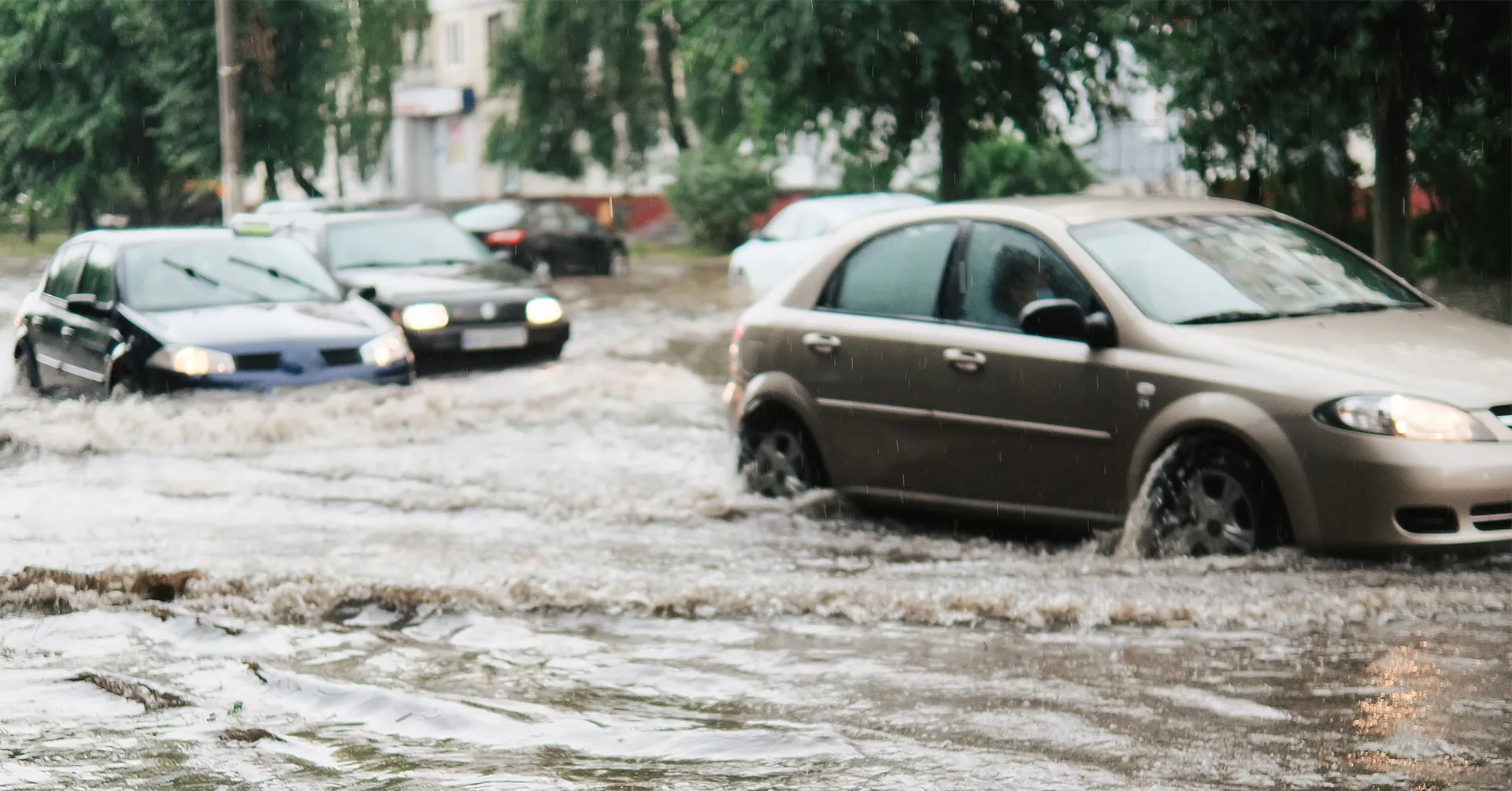
During a typical hurricane season, a major hurricane will result in severe damage from high winds, floodwaters, and downed power lines. These safety hazards will force most employees to either stay in a shelter or shelter with friends outside of the danger zone. With remote work at an all-time high, your employees may also be more dispersed than in past hurricane seasons and less familiar with the local area.
In any event, there are many reasons why employees might not be able to stay productive or work normal hours during a hurricane. This is the perfect time to send concise, thoughtful messages that affirm the company is concerned with their safety. Make it clear you are not concerned with employees coming back to the office until it is safe and you understand if it takes some time.
Sample hurricane text for office updates
Use this hurricane SMS / text template for office closures:
Due to severe weather caused by Hurricane [NAME], the [LOCATION] office will be closed on [DAY OF WEEK AND DATE]. For the latest updates, visit: [URL]
Sample hurricane email for office updates
Use this email notification template for office closures:
Due to severe weather caused by Hurricane [NAME], the [LOCATION] office will be closed on [DAY OF WEEK AND DATE]. Contact your supervisor to make arrangements and discuss your work schedule.
If you need to access the office before the storm arrives, please contact [CONTACT NAME] to coordinate.
We will update you [FREQUENCY] on the status of the office closure. For the latest updates, visit: [URL]
After the storm
Once the storm has passed, it’s time to check in with employees and begin the business recovery plan. Hurricane email templates and surveys are an effective way to continue communications post-hurricane. Surveys are a fast way to gain insight into the status of employees and facilities, the next steps from management, and who can return to work.
Sample hurricane email for recovery updates
Send this message to employees after a hurricane:
The severe weather from Hurricane [NAME] has moved out of our area, and our office will be reopening [DAY OF WEEK AND DATE] for regular hours.
If you are not currently approved to work remotely, please contact your supervisor if you can’t make it into the office to make arrangements. If you have other questions or concerns, reach out to [CONTACT NAME AND EMAIL].
Sample hurricane survey message for employees during recovery
Use this post-hurricane survey template to assess employees’ status:
We’re offering assistance to [COMPANY NAME] employees to help with their Hurricane [NAME] recovery efforts. If you’d like assistance, reach out to your supervisor or reply to this message so we can learn more about your needs.
Measure Your Effectiveness
After any major incident, you should take inventory of your response plans and assess their effectiveness. Review the performance of your notifications and messages to see what channels and messages were most useful as well as any communication gaps that require attention.
For example, using your emergency communication solution, you can determine how long each message took to send and if there were any bouncebacks. If so, you may have outdated employee contact information or records issues worth investigating.
Ask for Feedback
Take advantage of surveys and go straight to the source. Following a major storm, consider asking employees who received messages:
- Were the notifications effective?
- Was the information provided sent at an appropriate time?
- Which communication channels were most useful?
This feedback will help you craft better messages and send them more efficiently next time. It will also engage employees and make them part of the improvement process.
Keep Your People Informed on Hurricane Safety
Remember, your communication plan will augment your emergency preparedness only if you have a reliable way to reach those impacted by the incident, so partner with human resources to ensure you have accurate contact information, phone numbers, and location data for any employees who may need support during hurricane season.
Additionally, take time to rehearse your plan in advance so your emergency management personnel are as prepared for as many scenarios as possible. If you have access to a threat monitoring solution, such as AlertMedia, make sure you are carefully reviewing regional forecasts and staying in touch with employees in areas likely to be affected. You can also coordinate with local authorities for full-scale drills.
By keeping messages relevant to the intended audience and taking advantage of as many communication channels as possible, your employees will be sure to pay attention and can rest assured the organization is doing everything it can to protect them, no matter what the forecast brings.

